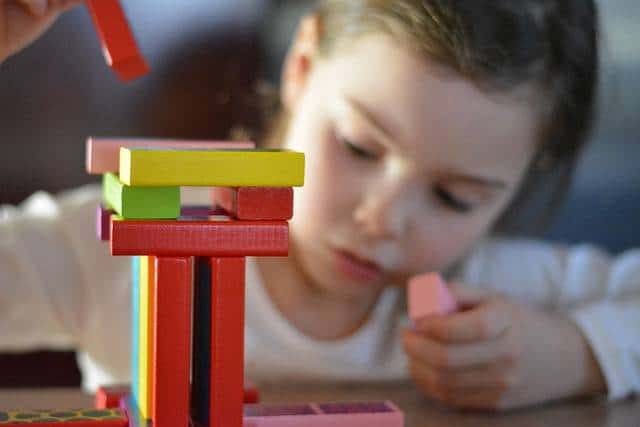Building positive relationships with students and their families is a critical component of effective teaching. When educators establish strong connections, students feel valued, supported, and motivated to succeed. Additionally, involving families in the educational process strengthens the home-school partnership, leading to improved student outcomes. In this teaching blog, we will explore the importance of building positive relationships with students and their families, as well as practical strategies for fostering these connections. By implementing these strategies, you can create a nurturing and inclusive learning environment that maximizes student engagement and achievement.
Create a Welcoming Classroom Environment to Build Great Relationships
A welcoming classroom environment sets the tone for positive relationships with students and families. Consider the following strategies:
a) Personalize the space: Display student work, photographs, and culturally diverse materials that reflect the identities and experiences of your students. This helps create a sense of belonging and inclusivity.
b) Establish classroom routines: Clear and consistent routines provide a sense of predictability, making students feel comfortable and secure in the classroom environment.
c) Greet students warmly: Start each day by greeting students individually, using their names and showing genuine interest in their well-being. This simple act fosters a positive connection and sets a welcoming tone for the day.
d) Communicate expectations: Clearly communicate academic and behavioral expectations to students and families from the beginning. Provide a written overview of the curriculum, grading policies, and classroom procedures.
Establish Effective Communication Channels
Open and effective communication is vital for building positive relationships with students and families. Consider the following strategies:
a) Regular newsletters or emails: Keep families informed about classroom activities, upcoming events, and important deadlines. Highlight student achievements and provide suggestions for supporting learning at home.
b) Parent-teacher conferences: Schedule regular conferences to discuss student progress, strengths, and areas for improvement. Listen attentively to parents’ perspectives and concerns and collaborate on strategies to support student success.
c) Digital platforms: Utilize digital platforms, such as online portals or apps, to share updates, assignments, and grades with families. This facilitates transparent and convenient communication.
d) Language accessibility: Ensure that communication is accessible to families with diverse language backgrounds. Provide translations or interpreters as needed to bridge any language barriers.
e) Positive phone calls or notes: Reach out to families periodically with positive feedback about their child’s progress or behavior. This helps to build trust and strengthens the home-school partnership.

Show Genuine Interest in Students
Demonstrating genuine interest in students helps to build positive relationships. Consider the following strategies:
a) Get to know your students: Learn about their interests, hobbies, and aspirations. Incorporate this knowledge into your lessons and interactions to demonstrate that you value their individuality.
b) Be an active listener: Show empathy and listen attentively to students’ concerns, ideas, and questions. Encourage them to share their thoughts and actively engage in classroom discussions.
c) Use student-centered instructional approaches: Incorporate student choice, inquiry-based learning, and collaborative projects into your teaching. This shows that you respect their ideas and input.
d) Provide individual support: Identify and address the unique needs of each student. Offer extra help, accommodations, or differentiated instruction to support their learning and growth.
e) Celebrate student achievements: Recognize and celebrate student accomplishments, both academically and personally. Highlight their progress and effort to boost their self-confidence and motivation.
Engage Families as Partners in Learning
Involving families as partners in the learning process strengthens the educational journey of students. Consider the following strategies:
a) Collaborative goal-setting: Involve families in setting academic and behavioral goals for their child. This shared responsibility fosters a sense of ownership and commitment from both the teacher and the family.
b) Family involvement in classroom activities: Invite families to participate in classroom activities, such as volunteering for field trips, sharing their expertise, or conducting workshops. This promotes a sense of belonging and allows families to witness their child’s learning firsthand.
c) Homework and study support: Provide families with resources, guidelines, and strategies to support their child’s learning at home. Encourage open communication about homework assignments, study habits, and any challenges students may face.
d) Parent workshops and events: Organize workshops or events that provide families with valuable information and strategies to support their child’s education. Topics can include study skills, parenting tips, or navigating the educational system.
e) Home-school projects: Collaborate with families on projects that connect classroom learning with the home environment. This could involve family interviews, cultural celebrations, or collaborative research projects.
Address Concerns and Challenges Proactively
In building positive relationships, it is crucial to address concerns and challenges proactively. Consider the following strategies:
a) Approachable demeanor: Maintain an approachable demeanor that encourages open communication. Assure families that their concerns are valued and will be addressed promptly.
b) Active problem-solving: When concerns arise, collaborate with families to identify solutions. Seek common ground and explore different perspectives to find mutually beneficial resolutions.
c) Student support teams: Establish student support teams that include teachers, administrators, support staff, and families. These teams can meet regularly to discuss student progress, interventions, and any concerns that may arise.
d) Empathy and understanding: Show empathy and understanding when families express concerns. Acknowledge their perspectives and work together to find appropriate solutions.
e) Professional resources and referrals: Connect families with appropriate resources and referrals when necessary. This may include counseling services, academic support programs, or community organizations that can provide assistance.
To Conclude:
Building positive relationships with students and their families is a powerful tool for enhancing student engagement, motivation, and academic success. By creating a welcoming classroom environment, establishing effective communication channels, showing genuine interest in students, engaging families as partners in learning, and addressing concerns proactively, educators can cultivate a strong home-school partnership. These strategies promote a supportive and inclusive learning environment where students thrive. Remember, building positive relationships is an ongoing process that requires consistent effort and open communication. By investing in these relationships, educators can make a lasting impact on the lives of their students and foster a positive and collaborative educational community.


